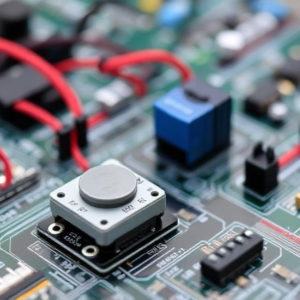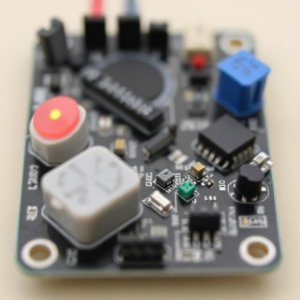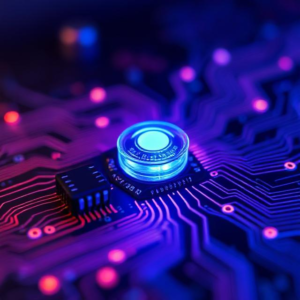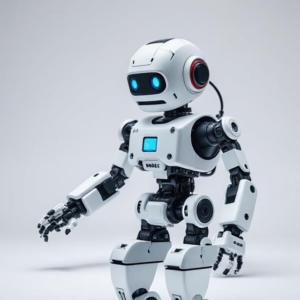What is a Sensor?
A sensor is a device that detects or measures something from the physical world, like temperature, light, pressure, or motion, and then converts that information into an electrical signal that can be understood by other electronic components or systems. Sensors act like the “senses” of a device, much like how your eyes, ears, and skin help you sense the world around you.
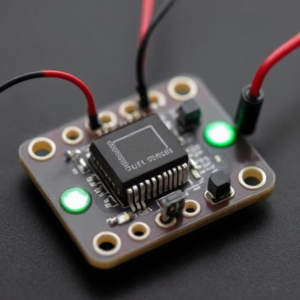
How Do Sensors Work?
Sensors work by detecting changes in their surroundings, like temperature or light, and then producing an electrical signal that is sent to other parts of the system. The signal could be a voltage, current, or even a digital code, depending on the type of sensor.
Here’s how some common types of sensors work:
- Temperature Sensor (Thermistor or Thermocouple):
- A temperature sensor detects changes in temperature. For example, a thermistor changes its resistance when the temperature changes. This change in resistance can be measured and used to determine the temperature.
- Light Sensor (Photocell or Light Dependent Resistor – LDR):
- A light sensor detects light levels. A photocell or LDR changes its resistance depending on how much light hits it. When it’s bright, its resistance drops, and when it’s dark, the resistance increases. This can be used to adjust things like screen brightness or activate lights when it gets dark.
- Motion Sensor (PIR Sensor):
- A PIR (Passive Infrared) sensor detects movement by sensing changes in infrared radiation (heat) from objects like people. It’s often used in security systems to detect when someone moves in front of it.
- Pressure Sensor (Piezoelectric Sensor):
- A pressure sensor detects force or pressure. A piezoelectric sensor generates an electrical charge when it’s compressed. This can be used in things like weather stations or touch-sensitive buttons.
- Humidity Sensor:
- A humidity sensor detects the moisture level in the air. It’s useful in weather stations, air conditioning systems, and even in plants or homes to ensure the environment has the right amount of moisture.
- Proximity Sensor:
- A proximity sensor detects how close something is. For example, your smartphone may use a proximity sensor to turn off the screen when you put it close to your ear during a call, so you don’t accidentally press buttons with your cheek.
Types of Sensors
- Analog Sensors: These sensors provide a continuous signal that can vary. For example, a temperature sensor might give a voltage output that changes smoothly as the temperature rises and falls.
- Digital Sensors: These sensors provide an “on/off” type signal. For example, a motion sensor might send a signal only when motion is detected (on) or not detected (off).
Why Are Sensors Important?
Sensors are used in almost every modern device and system to interact with the physical world. They help make devices smart and responsive. Here are a few ways they’re used:
- In Cars:
- Sensors monitor things like tire pressure, engine temperature, and fuel levels to keep the car running smoothly.
- In Phones:
- Your phone has many sensors like a light sensor (to adjust screen brightness) or an accelerometer (to detect when you turn the phone sideways).
- In Healthcare:
- Sensors are used in medical devices to monitor heart rate, blood oxygen levels, or even glucose levels for diabetic patients.
- In Smart Homes:
- Sensors are used in thermostats to detect room temperature, in smart lights to turn on/off based on motion, and in security systems to detect intruders.
- In Industrial Automation:
- Sensors monitor machines and systems to ensure everything is working properly, like checking for overheating or measuring the speed of a motor.
Example: How a Temperature Sensor Works
Let’s say you have a temperature sensor in your room to control a fan. The sensor detects the room’s temperature and sends this information to a microcontroller (like a small computer). If the temperature rises above a set level, the microcontroller can turn on the fan to cool the room down. When the temperature drops again, the fan turns off.
Summary:
- A sensor detects a physical change (like temperature, pressure, light, etc.) in the environment.
- It then converts that physical change into an electrical signal that can be used by other electronic parts of a system.
- Sensors are found in many everyday devices, from cars and smartphones to medical equipment and smart homes.

